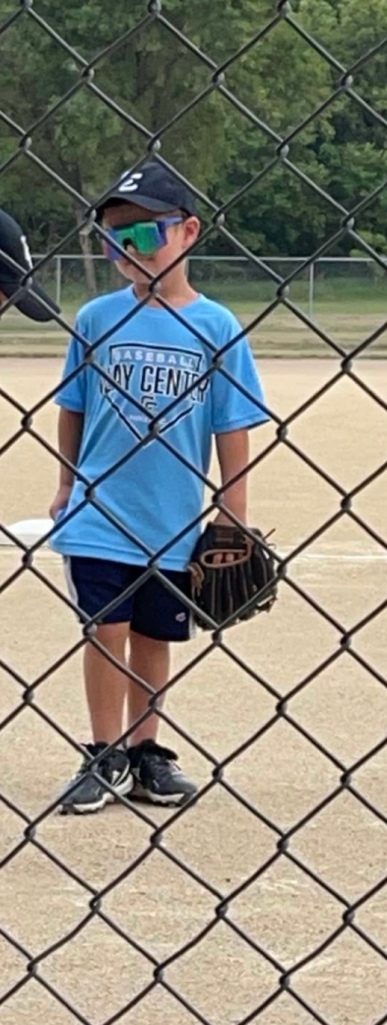On the Fourth of July 2023, I mowed the lawn.
It was 97 degrees and the “feels-like” temperature hovered around 104. Yes, it was hot.
It was especially hot for an old Bubba like me. But I had what they call in sports and in rocket science, a “window of opportunity”, so I drank a lot of water and got the job done before the evening’s festivities began.
While mowing, my mind often wanders. Sometimes my brain rants. Sometimes it attempts to solve highly complex problems. But sometimes it kicks up memories of things not remembered for years.
In this particular instance, it was a trip down memory lane to the Fourth of July, 1981, and an American Legion baseball doubleheader road trip to the Fort Leavenworth Army base in Leavenworth, KS.
If memory serves, we only had 9, maybe 10, players make the 45-minute drive with our coaches to Leavenworth that day for a noon first pitch. Four or five players couldn’t make it because of family commitments or work. The legendary Kansas Hall of Fame baseball coach, Dennis “Harpo” Hurla was our manager. This was back in the day before he was a legend. Back then, Dennis was just a great baseball coach and a fabulous human; his well-deserved legendary status would come with time. I think our assistant coaches, “Easy” Ed Hernandez and Dom Dumovich, also traveled with us that day.
It was hot. Triple digits. We were smack dab in a month-long heat wave that eventually convinced my dad it was time to upgrade to central air conditioning. That had to be some serious heat (and maybe a little bit of whining from the family) if it convinced my dad to spend money on air conditioning.
There was a great crowd on the Fort Leavenworth base that day, even though 90% of onlookers were there for the holiday festivities on the post and not to watch a bunch of rowdy, 17-18-year-old baseball players play.
Inside my 58-year-old brain, I feel we swept the doubleheader. I know we at least won one game because we almost always won at least one game, right? I remember being completely drained physically at the end of the second game. This was before the time when everyone felt the need to make every senior-level baseball field a mini, professional-grade baseball field. The infield was dirt. The outfield was dry, sun-burnt grass. The kicker, however, was the dugouts, which were the open-air, chain-link fence versions with no roof or sun protection. In short, it was miserably hot with no means of escape until the final out of the final inning.
After the game, we packed up the gear with the normal high school boy smack-talking and giving Harpo crap about his talent for scheduling games at the worst times of day under the worst environmental conditions. We carried the team gear and our gear to Harpo’s red and white VW van. He must have felt sorry for us or maybe he appreciated the fact we showed up and played the games because, shortly after pulling out of the Ft. Leavenworth front gate onto K-7 highway, he flicked on the right blinker and turned into Pizza Hut. I can still visualize him turning around in the driver’s seat with that million-dollar smile of his, and asking, “Boys, how about some pizza?”
Our mothers would have been impressed with the speed at which nine teenage boys threw off their sweaty and stinky t-shirts, slapped on a clean one dug from the recesses of their bags, and headed for the Pizza Hut door. The blast of cold air as I stepped into the restaurant and the smell of pizza wafting through the air is a memory I hope never slips from my neural storage.
Never before had ice-cold Pepsi from the tap tasted so refreshing.
Never before had a pizza been so utterly satisfying.
There may have been a shared pitcher of beer somewhere in the mix for the 18-year-olds (wink wink) only. The camaraderie around those two tables in an almost empty Pizza Hut restaurant on a blistering Fourth of July baseball road trip evening is the essence of what sports and teams are about. Good times.
As I finished mowing and sat in the shade with my mental faculties firmly back in 2023, I smiled at the memory of that summer day in 1981. I smiled thinking about those teammates. I smiled thinking about Easy Ed and Dom. I smiled thinking about Dennis “Harpo” Hurla and the opportunity he gave me to enjoy baseball at a high level. Mostly, I thought about ice-cold Pepsi, a belly full of pizza, and a day spent playing the game I loved with the best teammates one can hope to spend time with.
I also thought of young athletes today existing in our uber-connected cyber society. A hope I have is the younger generations of players don’t miss the experiences these lifetime connections offer as they navigate the slippery slope that is the modern corporate youth sports model.

















